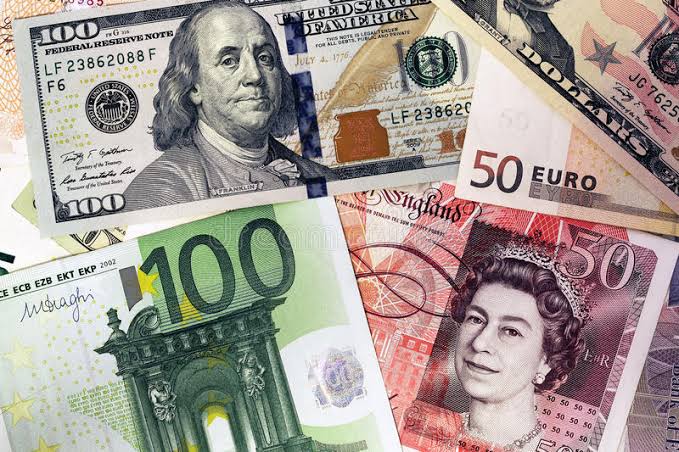VOT Research Desk
Nov 5
Analytics and Recommendations
After a drop following the release of the NFP, which erased gains after the FOMC-fueled rise, the US Dollar is now hitting a crucial area of support once again. The CPI data on Thursday morning, the pinnacle of the next US economic calendar, will bring the attention back to inflation.
The Fed hasn’t yet talked up halting interest rate increases, so the FOMC rate decision had an aggressive tenor. On Thursday, the USD’s strength and the market’s fragility were the main topics of a robust reaction to this. The key question is if they can last until the October CPI statistics are released the following week.
At least when viewed through the lens of DXY, the US dollar is a hybrid. This is a crucial point to make, in my opinion, because many people are wondering why the US dollar hasn’t risen since this morning’s release of the Non-Farm Payrolls data, which seems to keep the Fed on an aggressive path.
The headline result exceeded expectations, printing at +261k as opposed to +200k as expected. The report’s component measuring pay growth, average hourly earnings, came in at 4.7% as predicted. The unemployment rate did turn out to be a little higher than anticipated, coming in at 3.7% as opposed to 3.6% anticipated. Overall, there is little evidence of a severe slowdown in the US labor market, which the Fed monitors in order to determine when to reduce their rate hike strategy.
Additionally, the USD immediately benefited significantly from the FOMC’s rate decision; However, at this point, the gains from the Wednesday open have been completely erased by the Friday pullback. Naturally, this raises the question of whether the US dollar has reached its peak.
Again, however, in order to get a better understanding of the situation, we need to look back at the DXY quote. This is likely due to key supports appearing in EUR/USD and GBP/USD. With the Euro and British Pound accounting for 57.6 and 11.9% of the DXY quote, a support bounce in those major pairs can result in a significant pullback in the DXY, as we are witnessing this morning following NFP.
After price made a series of lower highs, we can see that the compression continues on the USD daily chart .The British pound was making a move that looked like a collapse toward the end of September, when the peak high was set. That then led to the double top, where resistance was at 113.92. A strong fall to the projected target of 109.62, which was a big part of setting the low last week, followed.
That resulted in a rapid surge in the value of the US dollar, which accelerated through the Fed and received a second boost in anticipation of the Bank of England’s rate decision on Thursday.
After a strong, one-sided run, we now have pullback. Again, this will likely be related to whether bears are willing to hit lower highs in EUR/USD or GBP/USD. The main question is whether buyers step in to provide higher-low support.
US DOLLAR NEARTERM VIEW
A lot of well-known support levels reappear as a result of the USD making a strong move down. A crucial area was at 111.74, and I had considered it a point of resistance on Monday. This was followed by the FOMC-driven burst on Wednesday, which brought about another attempt to test the 113.05 level and ultimately this week’s peak.
The jump in early September, 110.79, is the next support.. Following that, we have the 110–110.25 range, which is followed by the 109.62 mark, which at this time serves as the monthly bottom.
EUR/USD
Amazingly, the Euro makes up 57.6% of the DXY. Therefore, as we frequently repeat, the USD will have a very tough time making any significant movement without at least some involvement from the Euro.
A mirror image breakdown in EUR/USD, which has assumed a much more aggressive tone since February when Russia invaded Ukraine, has been a major contributor to this year’s enormous USD uptrend.
Even the lofty parity threshold was insufficient to halt the selling; rather, it was only a blip that caused the trend to stall for a few months before giving in to selling pressure in September. With this week’s elevated at support drawn from the psychological threshold of.9750, sellers have been unable to gain much headway recently below the.9700 mark.
EUR/USD Longer-Term Organization
For longer-term perspectives, this week’s bounce from a lower-high is noteworthy, and this emphasizes a recent propensity in the pair towards greater highs and higher-lows.
It’s true that after such a sharp decline, even a bullish channel can be seen as a bearish setup because it resembles a bear signal. Having said that, given how clearly those psychological indicators have traded at.9950 and parity on a relatively short basis, there may still be work to be done inside of the range.
A deeper bullish rise with attention on that same 1.0095 level that helped to capture the high last week prior of the ECB rate announcement is possible if buyers can make another push above parity. The following swing is at 1.0198 after that.
As a breakdown of the.9750 support nullifies the higher-lows and puts sellers back in control, there is also good news for EUR/USD bearish.
GBP/USD RESPONSE TO THE RESPONSE
Yesterday, after a brief reversal to resistance at previous support before of the BoE rate announcement, prices made a sharp downward move until they started to test back below the 1.1180-1.1210 support level. If buyers can force a revival, as we stated in yesterday’s GBP post, soon after the dust from BoE had settled, “this will appear like a support inversion with a protracted wick on longer-term indicators. comes into the picture for. Additionally, placed between 1.1459 and the psychological level of 1.1500, the declining triangle’s previous support is located above that.









